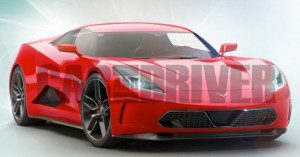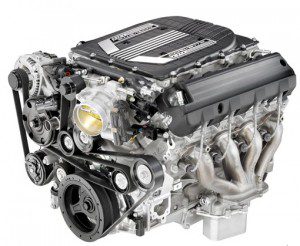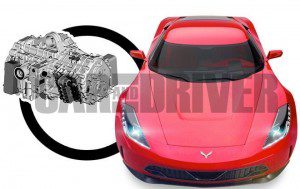C8 Chevrolet Corvette Exclusive! What to Expect from the Heart-Stopping, Mid-Engined Zora!
We have more serious dirt on GM’s secret mid-engined supercar! (2nd Installment of Car-and-Driver article)
THE ENGINES
Those who fear the demise of GM’s immortal small-block can relax because V-8s will surely propel the eighth-gen car. Using a single cam in the block plus pushrods offers weight, bulk, and cost incentives too valuable to squander. And the direct-injection, modular-displacement (cylinder shutdown), and variable-cam-timing technologies implemented for the C7 give this engine another lease on life. While it’s premature to quote displacement, power, and aspiration details, we expect the C8 to soundly beat today’s Stingray Z51’s acceleration (zero to 60 in 3.9 seconds), its 181-mph top speed, and its fuel-economy bogies.
Alternative power sources are planned to keep the Corvette viable when regulations clamp down more aggressively on fuel consumption. Potent V-6s with and without boost are inevitable. Moving the engine behind the cockpit clears space for an electric motor to drive the front wheels; by 2020, a four-wheel-drive Corvette hybrid is a distinct possibility.
THE PACKAGING
Porsche’s Boxster and Cayman are worthy case studies for the next Corvette because they’ve astutely answered knotty questions, such as “How do you construct a mid-engined roadster?” and “What about trunk space?”
Lacking million-dollar computer-drafting tools, we instead conducted our packaging study in 1/24 scale with help from Sam Haase, a crack model builder from Belleville, Michigan. The small-block V-8 he pirated from a Corvette kit didn’t quite fit the hole intended for the Boxster S’s 3.4-liter flat-six (full-scale measurements reveal that the V-8 is 3.5 inches longer, 2.3 inches taller, but 6.0 inches narrower than the Porsche flat-six). This necessitated a 4.0-inch scale wheelbase increase, yielding a C8/Porsche mock-up about the same length as today’s Corvette but with a 5.3-inch shorter wheelbase.
The radiator required to cool the Corvette’s larger engine would diminish the size of the Porsches’ five-cubic-foot front trunk—assuming said radiator is located in the nose. A viable alternative is to position all heat exchangers, including those for the engine, transaxle, and air conditioning, at the sides of the car between the door openings and the rear wheels, Ferrari Testarossa–style. A benefit of this arrangement would be shorter plumbing runs, but the C8’s aerodynamic engineers would have their work cut out coaxing enough airflow through such radiators.
A Corvette-sized muffler would fight for the space occupied by the Boxster’s five-cubic-foot rear trunk. This will surely disappoint golfers who drive their C7s to the links with more than one set of clubs in their 10-to-15-cubic-foot cargo holds. The new Zora ZR1 will be for those who enjoy long drives without using clubs.
Another packaging issue is the fuel-tank location. Porsche stuck with its historic ahead-of-the-cockpit spot for balance, but we imagine GM is more likely to tuck the C8’s gas tank in a center tunnel where it could share space with coolant plumbing.







